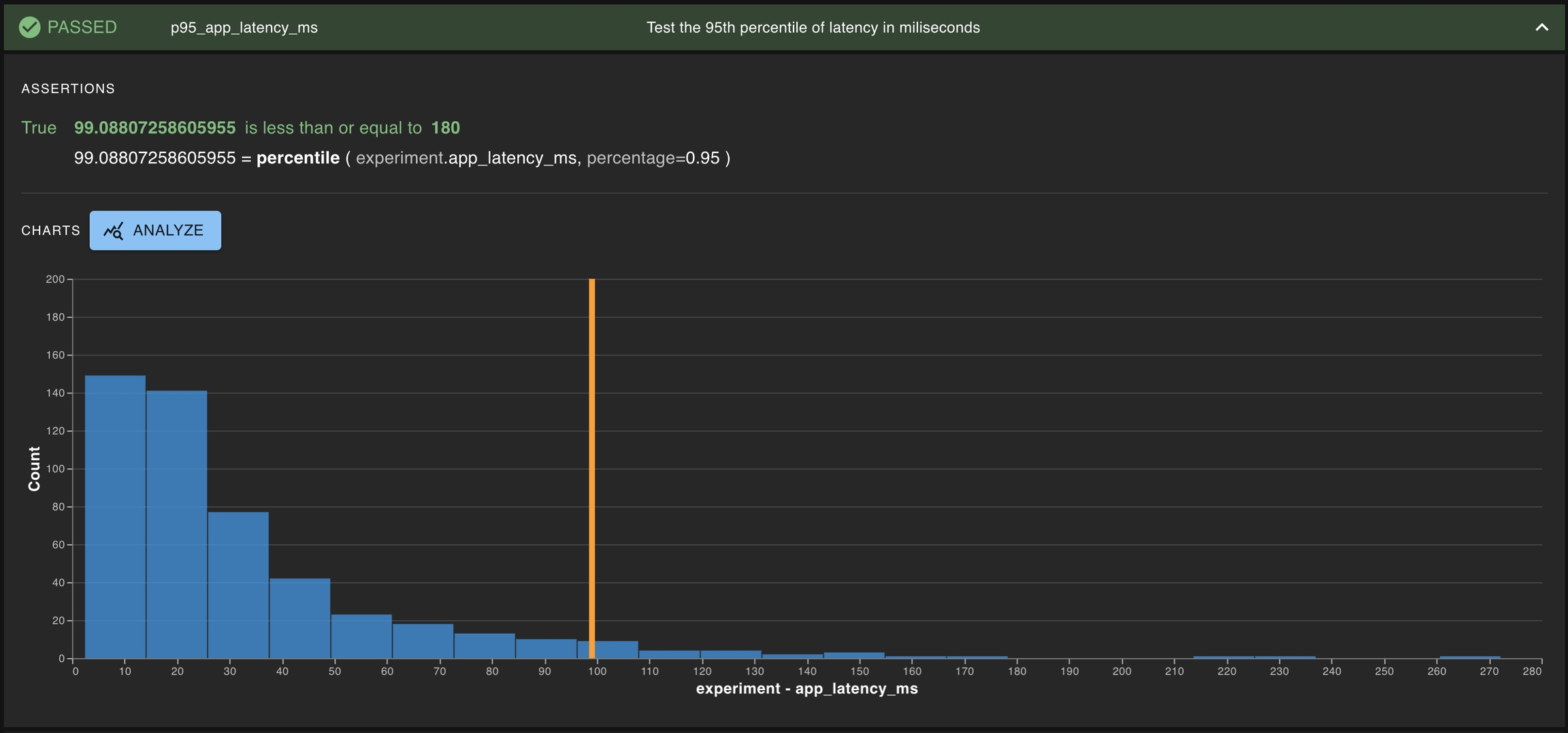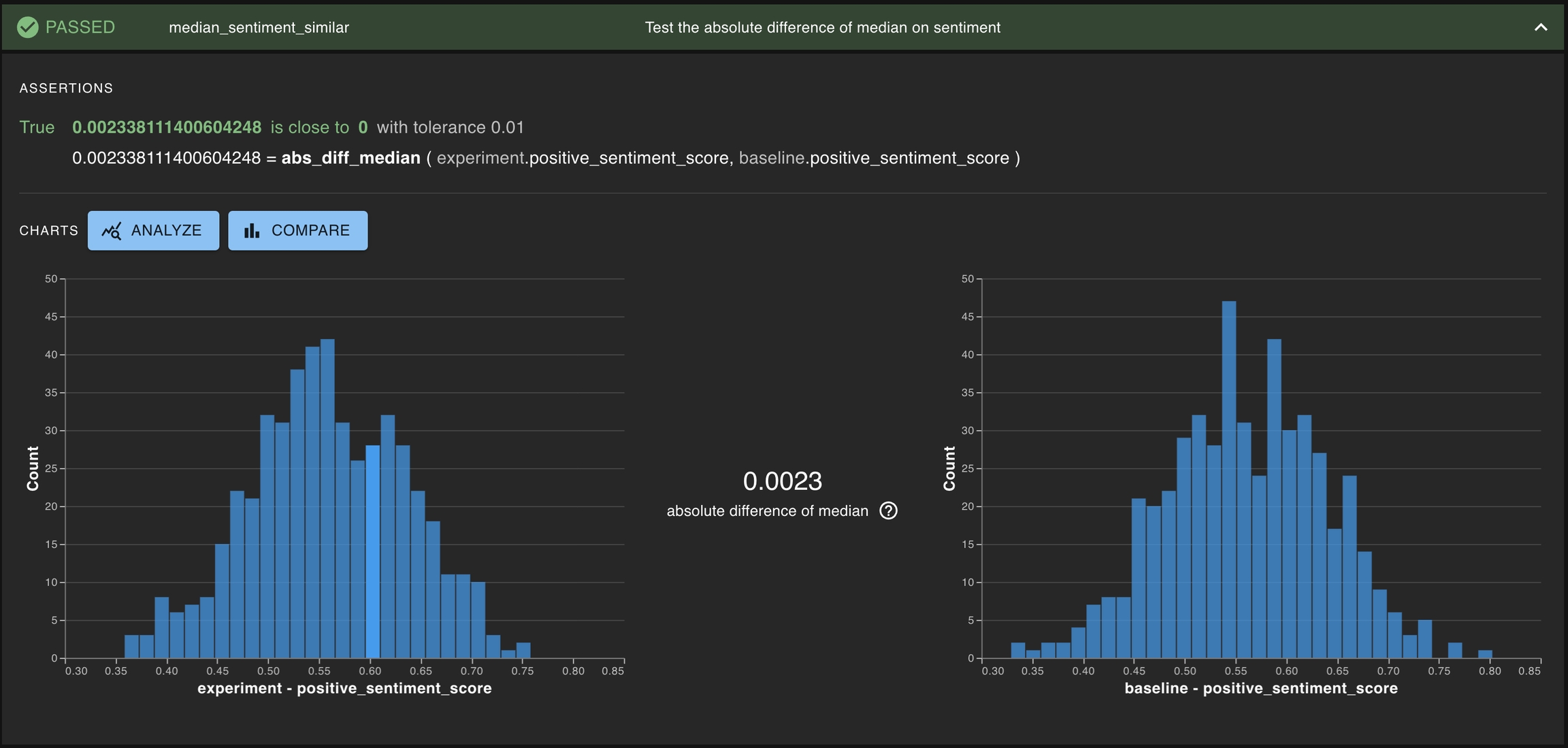Tests
Tests are the key tool within dbnl for asserting the behavior and consistency of Runs. Possible goals during testing can include:
Asserting that your application, holistically or for a chosen column, behaves consistently compared to a baseline.
Asserting that a chosen column meets its minimum desired behavior (e.g., inference throughput);
Asserting that a chosen column has a distribution that roughly matches a baseline reference;
By default, your Project will be pre-populated with a test for the first goal above. This is the "App Similarity Index" test which gives you a quick understanding of whether your application's behavior has significantly deviated from a selected baseline.
What's in a Test?
At a high level, a Test is a statistic and an assertion. Generally, the statistic aggregates the data in a column or columns, and the assertion tests some truth about that aggregation. This assertion may check the values from a single Run, or it may check how the values in a Run have changed compared to a baseline. Some basic examples:
Assert the
95th percentileofapp_latency_msis less than or equal to180

Assert the
absolute difference of medianofpositive_sentiment_scoreagainst the baseline is close to0

In the next sections, we will explore the objects required for testing alongside the methods for creating tests, running tests, reviewing/analyzing tests, and some best practices.
Was this helpful?

